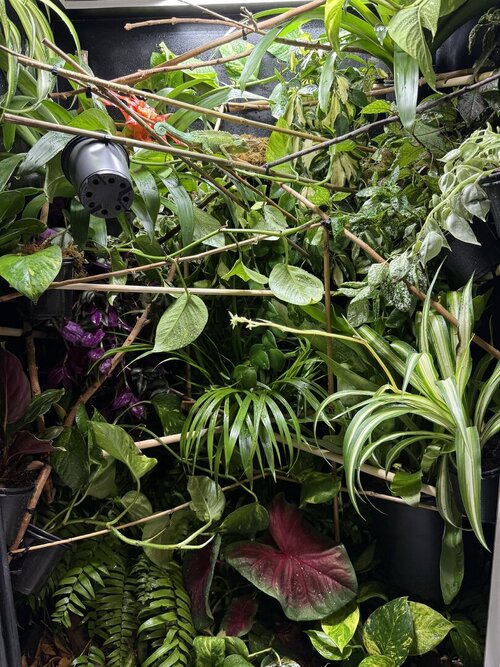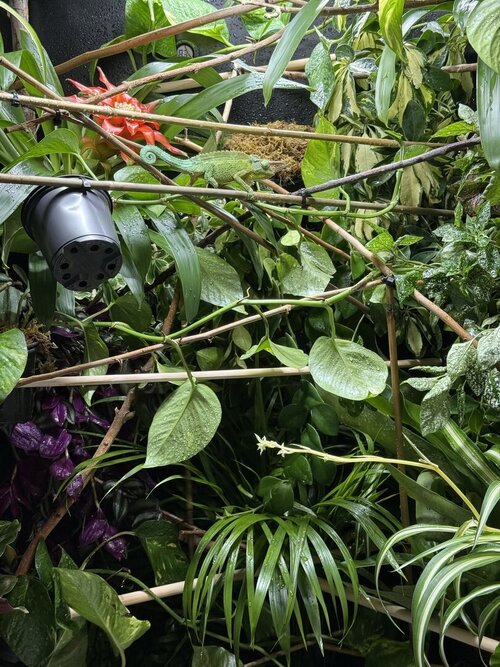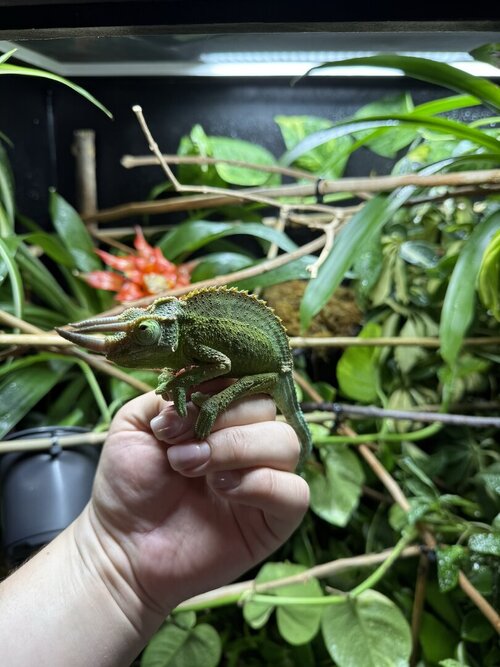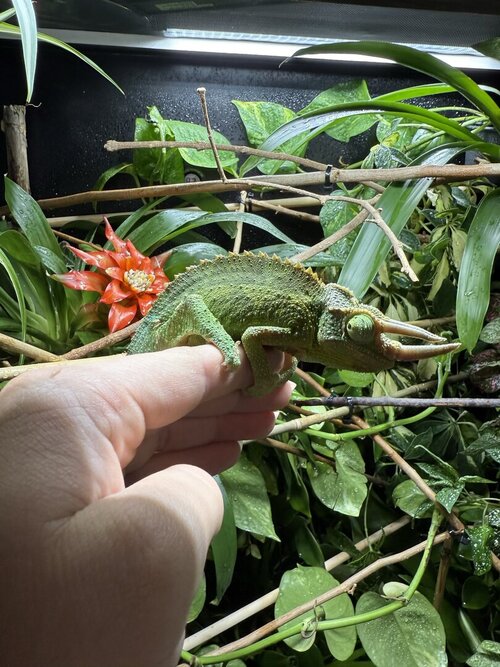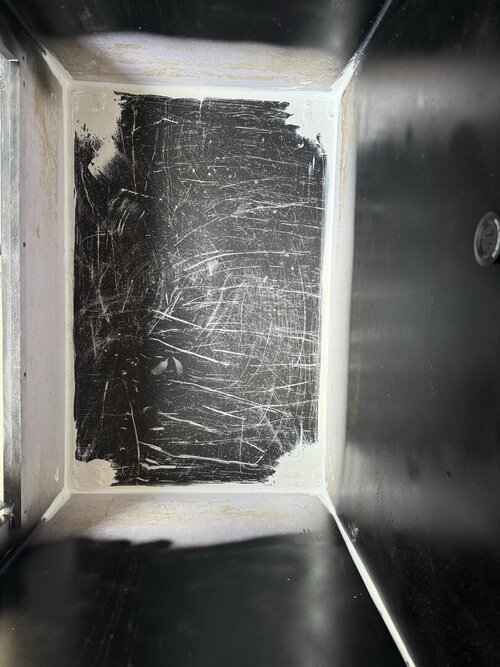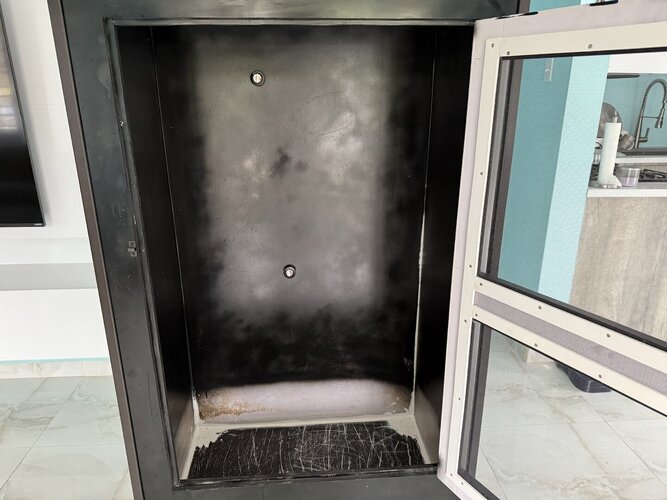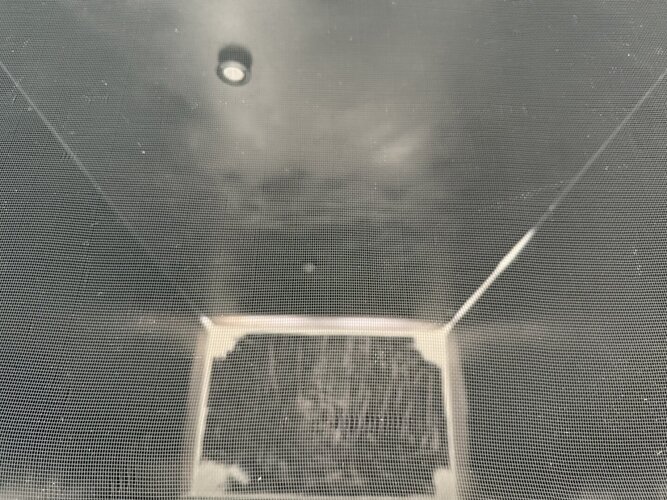Hello Chameleon Community,
I would like to share a detailed overview of my male Trioceros jacksonii bioactive enclosure in hopes of receiving constructive feedback, suggestions, and insights from experienced keepers. My goal is to ensure his habitat is optimal and to refine the setup wherever necessary.
1. Enclosure Specifications:
I would appreciate the community’s insights on:
Thank you very much for taking the time to review my enclosure and for sharing your expertise. Your advice will be invaluable in continuing to improve my Jackson’s care and quality of life.
I would like to share a detailed overview of my male Trioceros jacksonii bioactive enclosure in hopes of receiving constructive feedback, suggestions, and insights from experienced keepers. My goal is to ensure his habitat is optimal and to refine the setup wherever necessary.
1. Enclosure Specifications:
- Dimensions: 5 ft (H) × 2 ft (W) × 3 ft (L)
- Material: PVC panels with full screen top and screen door for ventilation
- Location: Inside a ventilated closet with screen sections for airflow (top and door)
- Ambient Temperature: Maintained at 70°F (21°C) via inverter AC (airflow does not blow directly into enclosure)
- Lighting Setup:
- 1 basking heat lamp (50 watts) 80-85F
- 1 UVB fixture 5.0 Reptisun (appropriate Ferguson Zone for Jackson’s)
- 2 LED plant lights to support live plant growth (Arcadia Jungle Dawn)
- Hydration System: MistKing automatic misting system with the following schedule:
- 6:30 am – 2 minutes
- 7:30 pm - 2minutes
- 9:00 pm – 2 minutes
- 12:30 am - 1 minute
- 3:30 am – 1 minute
- Humidity Management: Nighttime goal is 80%+, achieved through increased moss coverage on substrate and plants. Daytime humidity fluctuates naturally between misting cycles. Have a Switchbot sensors to keep an eye on humidity and temps, at day temp goes around 70 to 85 in the basking branch, at night drop to 65/68 most of the time. Humidity at day goes from 46 to 60, at night gets to 80+ peaks and on the middle got 80+ consistently.
- Ventilation: Gentle airflow maintained by low-speed fans to prevent stagnant air while preserving humidity. 3 times a day for 30 minutes intervals.
- Substrate Layers: Custom bioactive mix (coconut fiber, orchid bark, sphagnum moss, peat moss, reptile sand, worm humus, and soil), topped with live moss and leaf litter.
- Microfauna: Established colonies of springtails and isopods for waste breakdown.
- Plant Selection:
- Pothos (Epipremnum aureum)
- Schefflera (Schefflera arboricola)
- Areca palm (Dypsis lutescens)
- Bromeliads
- Additional tropical species planned for increased foliage density and climbing variety.
- Species & Sex: Male Trioceros jacksonii
- Behavior: Very active; explores both upper and lower sections daily. Frequently uses horizontal and vertical pathways.
- Feeding Routine: Primarily fed roaches. Frequency: several times per week, with feeding response remaining strong.
- Hydration Behavior: Drinks readily from dripper and during misting sessions.
- Current Shedding: Actively shedding; most areas progressing normally. Colors remain vibrant.
- Recent Health Observation: Recently rubbed his lip against a branch, causing a minor superficial bleed which stopped quickly; monitoring closely. No behavioral changes noted.
I would appreciate the community’s insights on:
- Plant placement & canopy density – to improve coverage, security, and climbing pathways.
- Misting schedule – whether current hydration times and night mist are optimal for Jackson’s chameleons.
- Humidity strategy – maintaining nighttime humidity without compromising ventilation.
- Overall health indicators – based on the photos provided.
- Any additional suggestions to make the enclosure as enriching and safe as possible.
Thank you very much for taking the time to review my enclosure and for sharing your expertise. Your advice will be invaluable in continuing to improve my Jackson’s care and quality of life.
Attachments
-
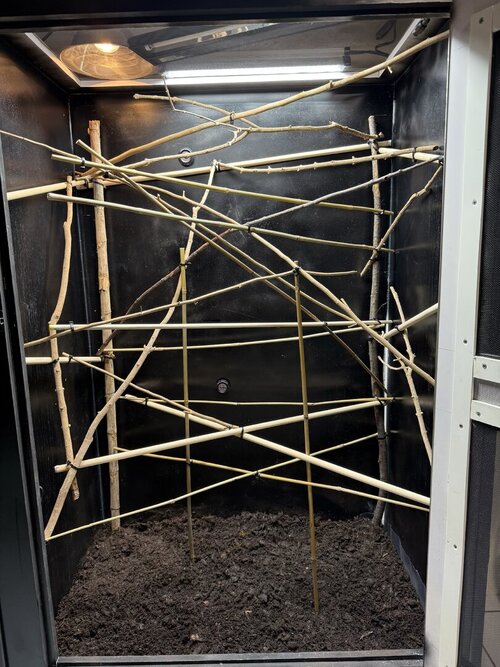 IMG_1287-compressed.jpeg217.3 KB · Views: 33
IMG_1287-compressed.jpeg217.3 KB · Views: 33 -
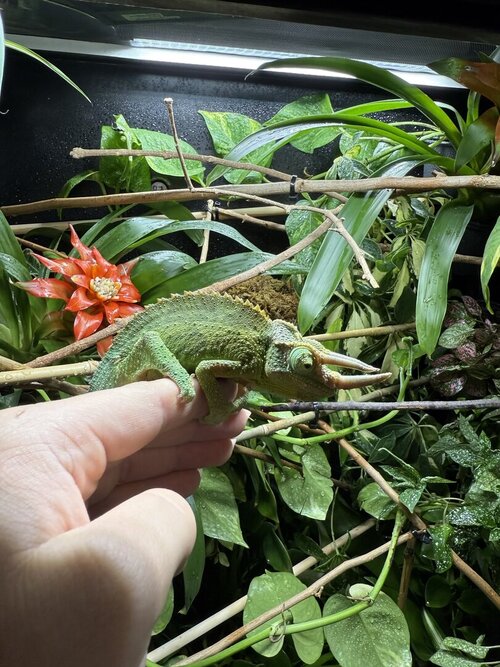 IMG_1301-compressed.jpeg234.9 KB · Views: 35
IMG_1301-compressed.jpeg234.9 KB · Views: 35 -
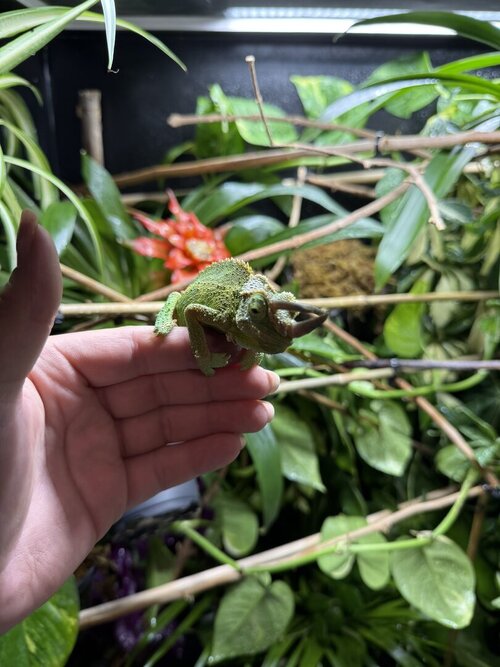 IMG_1299-compressed.jpeg138.6 KB · Views: 39
IMG_1299-compressed.jpeg138.6 KB · Views: 39 -
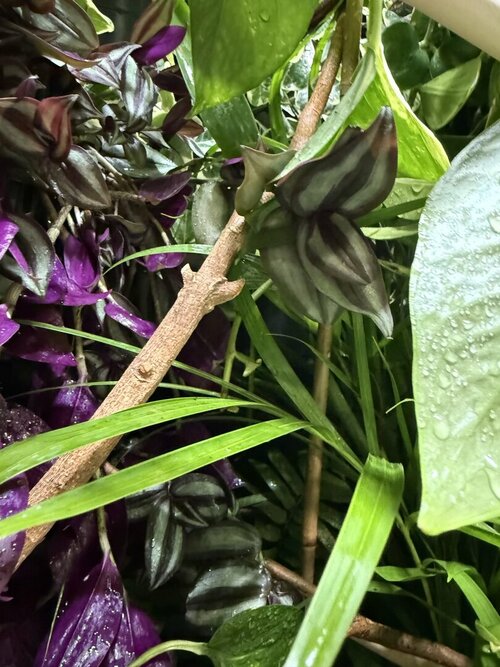 IMG_1295-compressed.jpeg189.8 KB · Views: 28
IMG_1295-compressed.jpeg189.8 KB · Views: 28 -
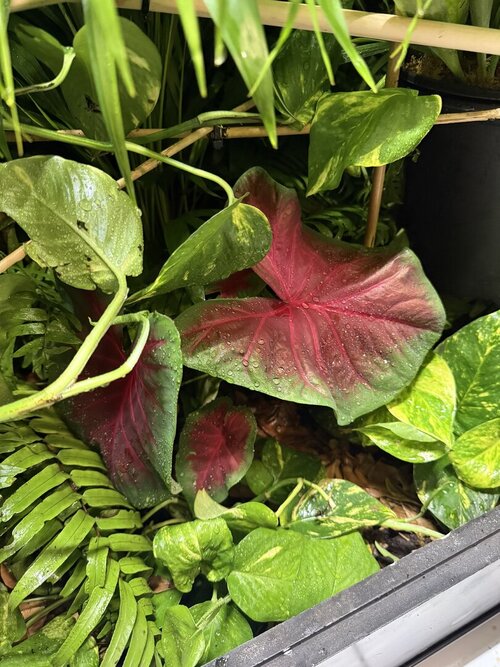 IMG_1294-compressed.jpeg219.5 KB · Views: 28
IMG_1294-compressed.jpeg219.5 KB · Views: 28 -
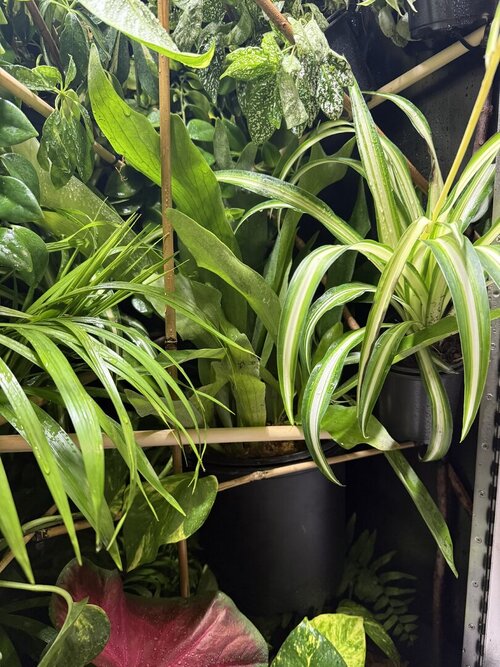 IMG_1293-compressed.jpeg235.8 KB · Views: 37
IMG_1293-compressed.jpeg235.8 KB · Views: 37 -
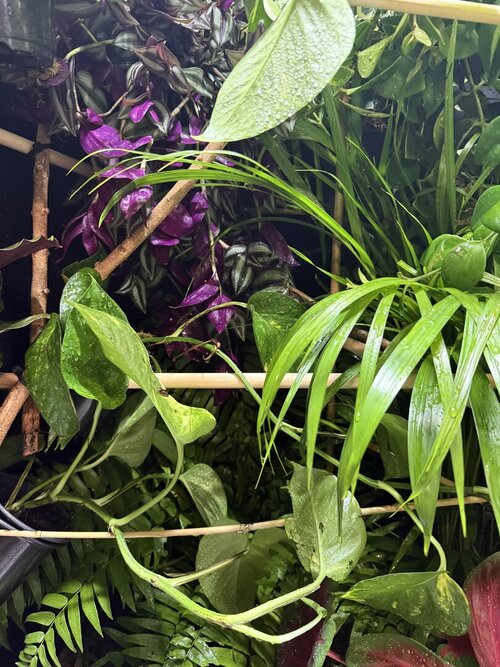 IMG_1292-compressed.jpeg240.9 KB · Views: 32
IMG_1292-compressed.jpeg240.9 KB · Views: 32 -
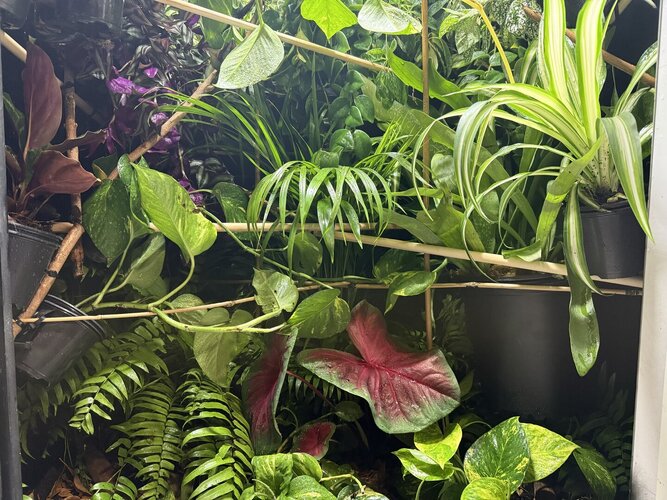 IMG_1290-compressed.jpeg413.3 KB · Views: 30
IMG_1290-compressed.jpeg413.3 KB · Views: 30 -
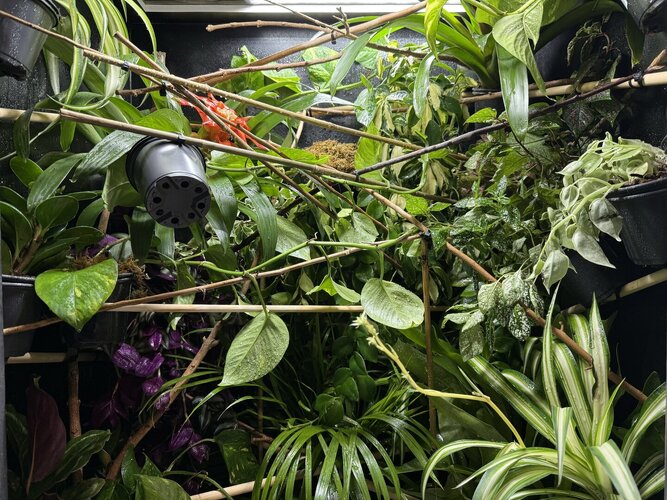 IMG_1289-compressed.jpeg463.3 KB · Views: 32
IMG_1289-compressed.jpeg463.3 KB · Views: 32 -
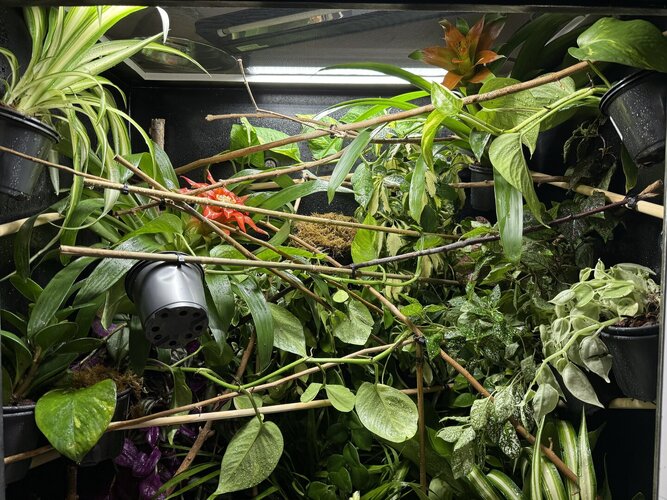 IMG_1288-compressed.jpeg451 KB · Views: 36
IMG_1288-compressed.jpeg451 KB · Views: 36

